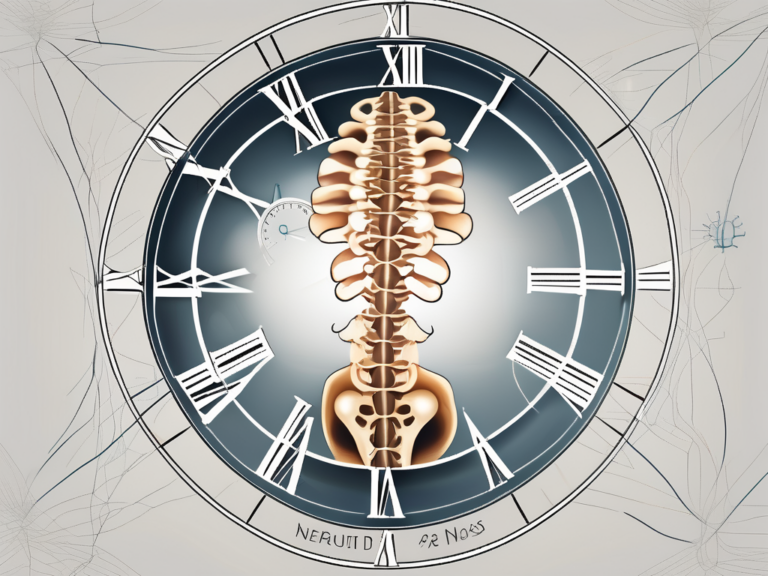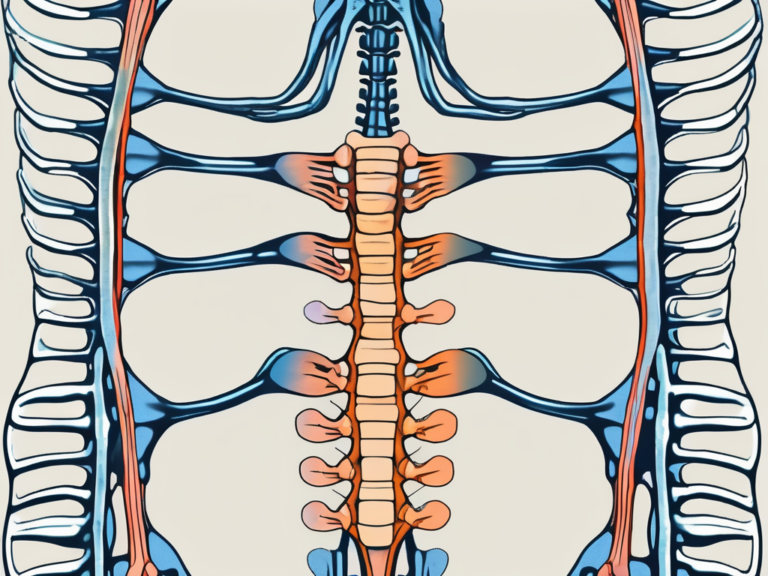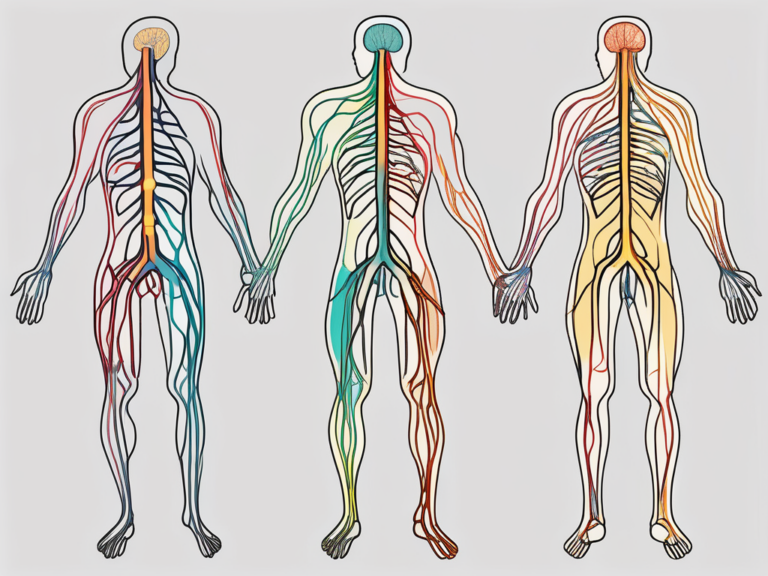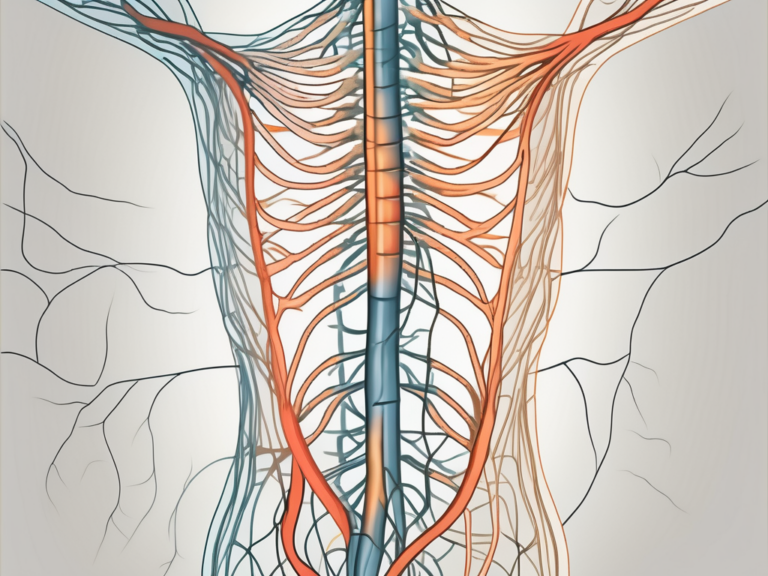How Do You Do Sacral Nerve Stimulation: A Comprehensive Guide
Sacral Nerve Stimulation (SNS) is a medical procedure that can be a game-changer for individuals suffering from certain bladder and bowel control issues. In this comprehensive guide, we will explore the ins and outs of SNS, understanding the science behind it, the benefits it offers, and how to prepare for the procedure. We will also discuss post-procedure care, potential risks and complications, and address common concerns through frequently asked questions.
Understanding Sacral Nerve Stimulation
Sacral Nerve Stimulation, also known as Sacral Neuromodulation, is a medical procedure that involves stimulating the sacral nerves. These nerves are located near the base of the spine and play a crucial role in controlling bladder and bowel function, as well as pelvic floor muscles.
The science behind Sacral Nerve Stimulation is fascinating. During the procedure, a small device is implanted near the sacral nerves. This device sends mild electrical impulses to these nerves, helping to restore normal bladder and bowel control. The electrical stimulation works by modulating nerve activity, effectively managing overactive bladder and urinary retention issues.
But how exactly does this electrical stimulation work? Well, it’s all about the complex communication between the nerves and the brain. When the sacral nerves are stimulated, they send signals to the brain, which then responds by sending signals back to the pelvic floor muscles. This intricate dance of nerve signals helps regulate bladder and bowel function, ensuring that everything works smoothly.
The Science Behind Sacral Nerve Stimulation
Now, let’s dive a little deeper into the science behind Sacral Nerve Stimulation. The sacral nerves are part of the autonomic nervous system, which controls involuntary bodily functions. These nerves are responsible for transmitting signals between the brain and the bladder, bowel, and pelvic floor muscles.
When there is a disruption in the normal functioning of the sacral nerves, it can lead to various bladder and bowel problems. For example, an overactive bladder can cause frequent urination and a constant feeling of urgency. On the other hand, urinary retention can result in the inability to empty the bladder completely. Both of these conditions can significantly impact a person’s quality of life.
That’s where Sacral Nerve Stimulation comes in. By implanting a small device near the sacral nerves, healthcare professionals can effectively manage these bladder and bowel problems. The device delivers mild electrical impulses to the nerves, stimulating them and restoring normal function.
Benefits of Sacral Nerve Stimulation
One of the key benefits of Sacral Nerve Stimulation is its potential to significantly improve a patient’s quality of life. People who undergo this procedure often experience a reduction in urinary frequency, urgency, and incontinence episodes. This means fewer trips to the bathroom and more control over their bladder.
But the benefits don’t stop there. Sacral Nerve Stimulation can also alleviate bowel control problems, such as chronic constipation and fecal incontinence. These conditions can be embarrassing and uncomfortable, but with the help of SNS, patients can regain control and live more comfortably.
It’s important to note that Sacral Nerve Stimulation may not be suitable for everyone. Consulting with a qualified healthcare professional is crucial to determine if this procedure is the right option for you. They will evaluate your specific condition and medical history to make an informed decision.
In conclusion, Sacral Nerve Stimulation is a remarkable medical procedure that harnesses the power of electrical stimulation to restore bladder and bowel control. By targeting the sacral nerves, healthcare professionals can help patients regain their quality of life and manage bladder and bowel problems effectively. It’s an exciting field of medicine that continues to evolve, offering hope and relief to those in need.
Preparing for Sacral Nerve Stimulation
Medical Evaluations and Tests
Prior to undergoing Sacral Nerve Stimulation, your healthcare provider will conduct a thorough evaluation to ensure the procedure is appropriate for your specific condition. This may involve various medical tests, such as urodynamic studies, which assess bladder function, and anal manometry, which evaluates the strength of anal sphincter muscles.
During the urodynamic studies, a small catheter will be inserted into your bladder to measure its capacity, pressure, and the flow of urine. This test helps your healthcare provider understand how well your bladder is functioning and if there are any abnormalities that may affect the success of the Sacral Nerve Stimulation procedure.
In addition to urodynamic studies, anal manometry is another important test that will be performed. This test measures the pressure and strength of your anal sphincter muscles. By evaluating the functionality of these muscles, your healthcare provider can determine if Sacral Nerve Stimulation is a suitable treatment option for you.
Mental Preparation and Expectations
Preparing mentally for any medical procedure is essential. Understandably, you may have concerns or anxieties about undergoing Sacral Nerve Stimulation. Discussing your expectations and concerns with your healthcare team can help alleviate any fears and allow them to address any questions you may have.
It is important to remember that Sacral Nerve Stimulation is a well-established and effective treatment for various conditions, including urinary and fecal incontinence. By discussing your expectations with your healthcare provider, you can gain a better understanding of the potential benefits and outcomes of the procedure.
During your consultation, your healthcare team will explain the entire Sacral Nerve Stimulation process, including the implantation of a small device that delivers electrical impulses to the sacral nerves. They will also discuss the potential risks and complications associated with the procedure, allowing you to make an informed decision about your treatment.
Furthermore, your healthcare provider may recommend certain lifestyle modifications or pelvic floor exercises to complement the Sacral Nerve Stimulation procedure. These additional measures can enhance the effectiveness of the treatment and improve your overall quality of life.
The Procedure of Sacral Nerve Stimulation
Step-by-Step Guide to the Procedure
The actual Sacral Nerve Stimulation procedure is typically performed in two stages. Firstly, you may undergo a trial period where a temporary device is placed under your skin to assess its effectiveness in managing your condition. If the trial is successful, the second stage involves the permanent implantation of the stimulator device.
During the trial period, you will be closely monitored by your medical team. They will assess the effectiveness of the temporary device in managing your condition and evaluate its impact on your quality of life. This trial period allows both you and your medical team to determine if Sacral Nerve Stimulation is the right treatment option for you.
If the trial period proves successful and you and your medical team decide to proceed with the permanent implantation, the second stage of the procedure will be scheduled. This stage involves a more invasive procedure, where the permanent stimulator device is implanted under your skin.
Prior to the permanent implantation, your medical team will thoroughly explain the procedure to you, addressing any concerns or questions you may have. They will also provide you with detailed instructions on how to prepare for the surgery, such as fasting requirements and medication adjustments.
On the day of the procedure, you will be admitted to the hospital or surgical center. The medical team, consisting of experienced urologists or colorectal surgeons, will ensure your comfort and safety throughout the process. They will administer anesthesia to ensure that you are comfortable and pain-free during the procedure.
Once the anesthesia takes effect, the surgeon will make a small incision in the area where the stimulator device will be implanted. They will carefully place the device under your skin, ensuring its proper positioning for optimal stimulation. The incision will then be closed with sutures or surgical staples.
Following the implantation, you will be closely monitored in a recovery area to ensure that you are stable and recovering well from the procedure. Your medical team will provide you with post-operative instructions, including how to care for the incision site and manage any discomfort or pain you may experience.
After a period of recovery, you will have follow-up appointments with your medical team to assess the effectiveness of the permanent stimulator device and make any necessary adjustments. They will work closely with you to optimize the settings of the device, ensuring that it provides the best possible relief for your condition.
Role of the Medical Team
During the procedure, a team of experienced healthcare professionals, including urologists or colorectal surgeons, will be involved. They will guide you through each step of the process, ensuring your comfort and safety throughout.
The urologists or colorectal surgeons are specialized in performing Sacral Nerve Stimulation procedures. They have extensive knowledge and expertise in this field, allowing them to provide the highest quality of care. They will work closely with you to understand your specific condition and develop a personalized treatment plan.
In addition to the surgeons, there will be a team of nurses and other healthcare professionals who will assist during the procedure. They will monitor your vital signs, administer anesthesia, and provide any necessary support throughout the process.
Throughout the procedure, the medical team will prioritize your comfort and safety. They will communicate with you, ensuring that you are informed and involved in the decision-making process. They will address any concerns or questions you may have, providing you with the necessary information to make informed decisions about your treatment.
After the procedure, the medical team will continue to be involved in your care. They will monitor your progress, assess the effectiveness of the stimulator device, and make any necessary adjustments to optimize its performance. They will be available to address any concerns or issues that may arise, providing ongoing support and guidance.
Post-Procedure Care and Management
Undergoing Sacral Nerve Stimulation is a significant step towards improving your health and well-being. After the procedure, it is important to prioritize your post-procedure care and follow your healthcare provider’s instructions diligently.
Immediate Aftercare Post-Procedure
Following Sacral Nerve Stimulation, your healthcare provider will provide you with specific instructions for proper aftercare. These instructions may include keeping the incision site clean and dry to prevent infection. It is essential to follow these guidelines to promote healing and reduce the risk of complications.
In addition to wound care, your healthcare provider may also advise you to avoid certain physical activities that could strain the area where the device was implanted. This precautionary measure is crucial to ensure the proper healing of the incision site and to prevent any damage to the device.
Furthermore, your healthcare provider may prescribe medications to manage pain or prevent infection. It is important to take these medications as directed and to promptly report any unexpected side effects or concerns to your healthcare team.
Long-Term Management and Follow-ups
Sacral Nerve Stimulation is not a one-time fix. It requires ongoing management and regular follow-up visits with your healthcare provider. These follow-up visits are essential to monitor your progress and make any necessary adjustments to the device settings.
During these appointments, your healthcare provider will evaluate the effectiveness of the Sacral Nerve Stimulation and assess whether any modifications are needed to optimize its benefits. They will carefully analyze your symptoms, review your progress, and make any necessary programming changes to ensure that the device continues to meet your individual needs.
Moreover, your healthcare provider will offer guidance on long-term management strategies to help you achieve the best possible outcomes. They may provide recommendations on lifestyle modifications, such as dietary changes or exercise routines, that can complement the benefits of Sacral Nerve Stimulation.
Additionally, these follow-up visits serve as an opportunity for you to ask any questions or express any concerns you may have. Your healthcare provider is there to support you throughout your journey, and they will address any uncertainties or anxieties you may experience.
Remember, the success of Sacral Nerve Stimulation depends not only on the procedure itself but also on the comprehensive post-procedure care and management. By following your healthcare provider’s instructions and attending regular follow-up visits, you are taking an active role in optimizing the benefits of this treatment and improving your quality of life.
Potential Risks and Complications
Understanding the Possible Risks
As with any medical procedure, Sacral Nerve Stimulation (SNS) does carry some risks. However, it is important to note that these risks are generally rare and can be managed effectively with proper medical guidance and support. It is crucial to have a comprehensive understanding of the potential risks associated with SNS before making an informed decision.
One potential risk of SNS is infection. Although the risk is low, as the procedure involves the implantation of a device, there is a slight possibility of infection at the implant site. However, healthcare providers take extensive precautions to minimize this risk, such as sterilizing the equipment and providing post-operative care instructions to prevent infection.
Pain or discomfort at the implant site is another possible risk. As with any surgical procedure, there may be some temporary discomfort or pain during the recovery period. However, healthcare providers can prescribe pain medications or suggest alternative pain management techniques to alleviate any discomfort experienced by the patient.
Lead migration is also a potential risk associated with SNS. The leads, which are the thin wires that connect the device to the nerves, may shift slightly over time. However, this can be easily addressed by regular follow-up appointments with the healthcare provider, who can adjust the positioning of the leads if necessary.
Additionally, allergic reactions to the materials used in the device can occur, although they are rare. Healthcare providers will thoroughly assess the patient’s medical history and conduct allergy tests to ensure that the materials used in the device are compatible with the patient’s body.
It is important to emphasize that the risks mentioned above are generally rare and can be effectively managed with the guidance and support of healthcare professionals. Patients considering SNS should have a detailed discussion with their healthcare provider to fully understand the potential risks and how they can be minimized.
How to Handle Complications
In the rare event of complications arising from Sacral Nerve Stimulation, it is crucial to seek immediate medical attention. While complications are uncommon, it is essential to be prepared and know how to handle them effectively.
Your healthcare provider will play a vital role in guiding you through any potential complications that may arise. They will provide you with the necessary support and expertise to address any issues promptly and effectively. It is important to maintain open communication with your healthcare provider and report any unusual symptoms or concerns immediately.
Should any complications occur, your healthcare provider will assess the situation and determine the appropriate course of action. They may recommend additional tests, adjustments to the device, or alternative treatment options to address the complications effectively.
Remember, complications are rare, and the benefits of Sacral Nerve Stimulation often outweigh the potential risks. By working closely with your healthcare provider and following their guidance, you can ensure a safe and successful outcome.
Frequently Asked Questions About Sacral Nerve Stimulation
Addressing Common Concerns
If you have specific concerns or questions about Sacral Nerve Stimulation, you are not alone. It is natural to seek clarification before undergoing any medical procedure. Carefully compiled here are answers to frequently asked questions regarding the procedure, its effectiveness, and potential outcomes.
Debunking Myths About the Procedure
Unfortunately, misinformation can sometimes circulate about medical procedures such as Sacral Nerve Stimulation. In this section, we address common myths and debunk them with accurate information based on scientific evidence and expert opinions.
In conclusion, Sacral Nerve Stimulation can offer hope for individuals struggling with bladder and bowel control issues. Understanding the procedure, its benefits, and potential risks is crucial when considering this option. Always consult with a healthcare professional for personalized advice and guidance relevant to your specific condition.






